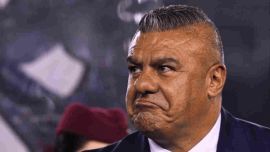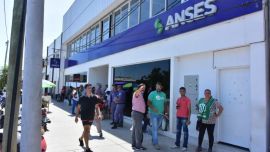The death of more than 20 people from the consumption of contaminated cocaine is a result of the impact of the coronavirus pandemic on the drug trade in Argentina, Federal Prosecutor Mónica Cuñarro, who specialises in drug-trafficking, has told the AFP news agency.
Cuñarro, who in 2010 created the country’s first prosecutorial unit specialising in the fight against drug-trafficking and complex crimes, said that in the midst of the limitations and economic crisis brought about by the Covid-19 pandemic, the drug trade has gone through a process of diversification and atomisation. These conditions have helped create smaller gangs like the one linked to the tragedy in Buenos Aires Province, which, she suggests, likely occurred because of a mixing error.
What does the mass intoxication at ‘Puerta 8’ in Loma Hermosa tell us about the current drug scene in Argentina?
What happened in Puerta 8 is unprecedented in Argentina in terms of the number of deaths.
There is a concrete and logical interest that, for example, such a gang from Argentina does not pass through and bring merchandise into the United States. At present there is no national agenda for local gangs, which has allowed very important growth in recent years and at the same time a ‘rusticity’ [a lack of sophistication] because the leaders of these gangs are in prison, but from prison they continue to manage the most important business, which is to take the drugs from here and take them to Europe.
How did the pandemic affect drug-trafficking operations in Argentina?
The pandemic devliered an economic crisis here, in Chile, Uruguay, France, Germany, in the world, it brought an economic crisis, which caused the market to atomise and business to diversify. So it is not only drug-trafficking but also the extortion of traders, protection money and hired killings. The use of people as sex objects in exchange for money, illegal gambling, highway robberies, which are assaults on trucks transporting goods, computer and bank account fraud and fraud with the use of data and the emptying of accounts. They have expanded.
It is also a product of the pandemic that whoever has the role of making the mixture – probably unintentionally because nobody wants to kill the client – has done it badly and this has provoked this unprecedented fatal result.
What role does Argentina play on the regional drug-trafficking map?
The suppliers are always the same: for cocaine, the majority are still from Colombia, Peru and Bolivia. Geographically, they are the only ones that can have a production size, but that is not what is most valuable. What is most valuable is the route, the transport, the logistics, the border, the corruption of police, state and judicial officials.
Argentina is a very interesting place for three reasons: firstly, because of its maritime outlets, the quality of its chemical precursors and its own human resources with highly qualified chemists, and the high quality of its products. But also because of another issue: money-laundering. There were periods of greater control and others of less control. I would say that they have been relaxed again since 2016 and to the current government.
What is the state's debt in the fight against this scourge?
The preliminary investigation and then the money trail are the big debts from which we cannot end the issue of drug-trafficking from a criminal point of view. If we attack related crime, which was the proposal of our commission, well, we take away all the money, all the assets that it costs them the most to get a financier, a loan shark or a construction company.
What is the incidence of corruption at different levels of the state?
There is an increase in the level of corruption that did not exist in the justice system, the federal justice system, and in those provincial justice systems where it has been divided because drug-trafficking was a crime that was dealt with by the national justice system, then it was federalised in the 1990s and from there the provincial forces were corrupted, with cases such as the police in the Province of Santa Fe, who do not control the territory, they are part of the crime and the business.
Where is Argentina heading in terms of drug-trafficking?
If it is not tackled seriously and a political decision is not taken not to let the police do what they want territorially, without political leadership, if complex intelligence is not improved, if the money trail is not followed, Argentina's destiny will be the formation of oligopolies of these gangs and what we are seeing as small pictures in Rosario (Santa Fe Province) will spread to the City of Buenos Aires, the Province of Buenos Aires and the rest of the country.
related news
by Magali Cervantes, AFP





















Comments